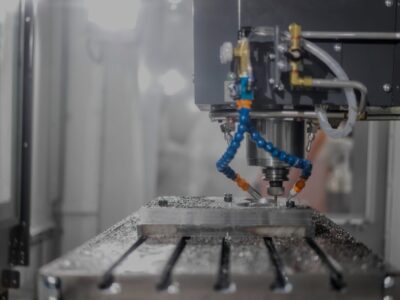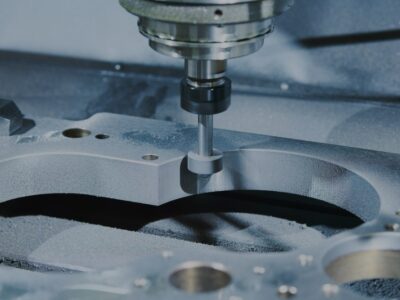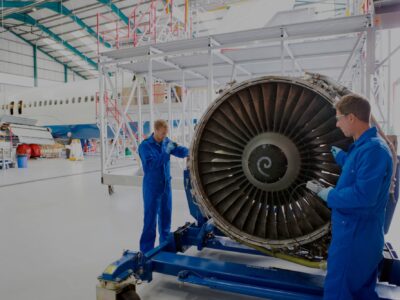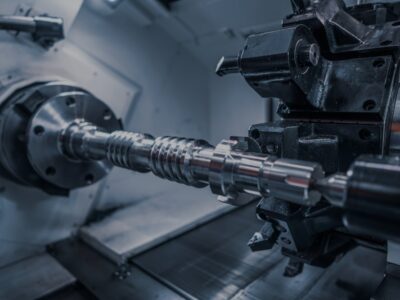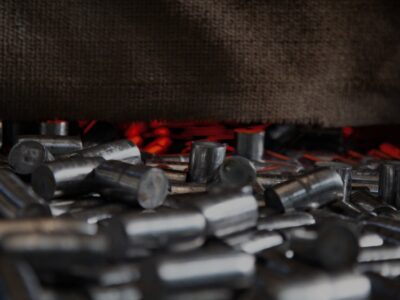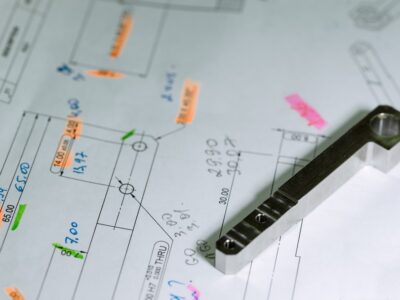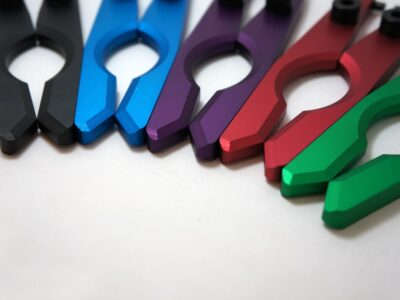Previously published on fastradius.com on August 24, 2022
CNC machining is a popular and efficient subtractive manufacturing method capable of producing precision parts from a variety of materials, typically metals or plastics. Regardless of material choice or production volume, performing some key evaluations and adjustments when designing a part can help you streamline your CNC machining process to reduce costs and optimize part quality.
General Advice for Designing for Modern CNC Machines
CNC machines are versatile and capable of producing highly accurate parts. However, there are a few things you’ll need to keep in mind when designing for modern CNC machines to ensure the manufacturing process is as efficient as possible.
You’ll want to:
- Take your drill bit’s diameter or standard drill bit sizes into account as you design your part’s internal corners, edges, holes, and cavities.
- Avoid deep pockets, as the tool’s feed rate must slow when cutting pockets greater than three times the tool’s diameter, increasing cycle time and machining cost.
- Avoid extremely small holes and use standard drill sizes.
- Have a minimum wall thickness of approximately 1.5mm.
- Remember that thicker walls mean shorter machining times.
- Avoid deep-hole tapping or threading where the tapping depth is more than 1.5 times the diameter of the tap.
- Use standard thread forms and sizes.
- Avoid flat-bottomed holes.
- Design rounded internal corners with a depth-to-tool diameter ratio of 3:1 or less.
- Avoid multiple finishes and opt for uniform finishes whenever possible.
- Split up complex parts when necessary.
- Remember that material certifications, non-standard inspection reports, export restrictions, and non-standard finishes can also increase lead time and overall costs.
Streamline CNC Machining via Design
To streamline the CNC machining process as much as possible, you’ll want to make the most of your initial part design. Incorporate the following during the design process:
Design With a Specific CNC Machining Process in Mind
When designing a part for CNC machining, make decisions about your component with a specific CNC machining process in mind. Different machines are better suited for different applications.
Consider whether you’ll use a CNC turning machine or a CNC milling machine. CNC turning uses a rotating workpiece with a stationary tool, while CNC milling involves a rotating tool and a fixed block. CNC turning will generally allow you to produce parts faster than milling, as it typically has shorter setup times. As a result, turning will usually be more affordable than milling.
Whether you use CNC turning or milling, you’ll have to take your cutting tool’s range of motion and working range into account. With a 5-axis CNC machine, you can more easily machine complex designs with fewer adjustments mid-machining. On the other hand, a machining tool with fewer axes may require more repositioning and it may take longer to machine that same complex part. It’s also worth noting that you’ll need specialized tools if your part has any internal geometries.
Consider Machine Tolerances and Size Limitations
You’ll also need to consider tolerances, the amount of acceptable variation from part to part. Tighter tolerances mean more prep time, longer processing times, and a more involved CNC machining process.
Remember that tolerance varies from material to material, as some materials are more machinable than others. For example, CNC machines generally have a +/- 0.005” general tolerance for metals and a +/- 0.010” general tolerance for plastics. To ensure your parts come out as intended and production is as cost-effective as possible, don’t over-tolerance and try to use standard dimensions and tolerances.
You’ll also need to take into account your tool’s capabilities when thinking about the size of your part. After all, if your part has a cut that’s too deep for your tool’s cutting length, you’ll need to resize the product or break it down into smaller pieces for later assembly, which can lengthen the production process. On the other hand, if you design part features that are too small, machining the details may be difficult, if not impossible.
Choose Appropriate Materials for Your Project’s Scope
Material can impact motor power, feed rate, and spindle speed, influencing overall cycle times. Plus, material affects the final part’s durability, performance, and overall cost, so you need to consider the function of your component and its end-use environment, as well as various materials’ ease of use, cost, rigidity, and density before making a final material selection.
Soft metals like brass, bronze, and aluminum are less expensive, lighter, and usually easier to machine than hard metals like steel. As a result, it generally costs less to machine soft metals. The drawback is that they can’t take on as much stress as hard metals.
Plastics are typically cheaper and more cost-effective than metals. However, they are more susceptible to warping and don’t have the same weight, rigidity, or structural integrity as metals. As a result, plastics aren’t ideal for parts that will experience extreme stress, wear, or tear. Plus, it’s difficult to achieve tight tolerances when CNC machining plastics.
Streamline CNC Design Files With These Tips
Streamlining your CNC design files before sending them to a manufacturing partner will make the manufacturing process go much smoother, and your parts will come out as you envisioned. The best way to optimize CNC design files for production is to:
- Ensure your CNC vector file has single-line paths and that each line connects to the next line’s endpoint.
- Minimize nodes and intersections if possible.
- Prioritize polylines over arcs and beziers, as CNC machines prefer polylines.
CNC Machining With SyBridge
CNC machining is an efficient, precise form of manufacturing. However, there are always things you can do to streamline the process, from selecting a suitable material to following CNC design best practices to working with an experienced manufacturing partner like SyBridge.
When you work with us, our engineers can help you streamline the entire CNC machining process, and by uploading a part file you can instantly analyze your design to identify potential problems that could arise during production. Create an account or contact us today to see how we can help bring your design to life.

